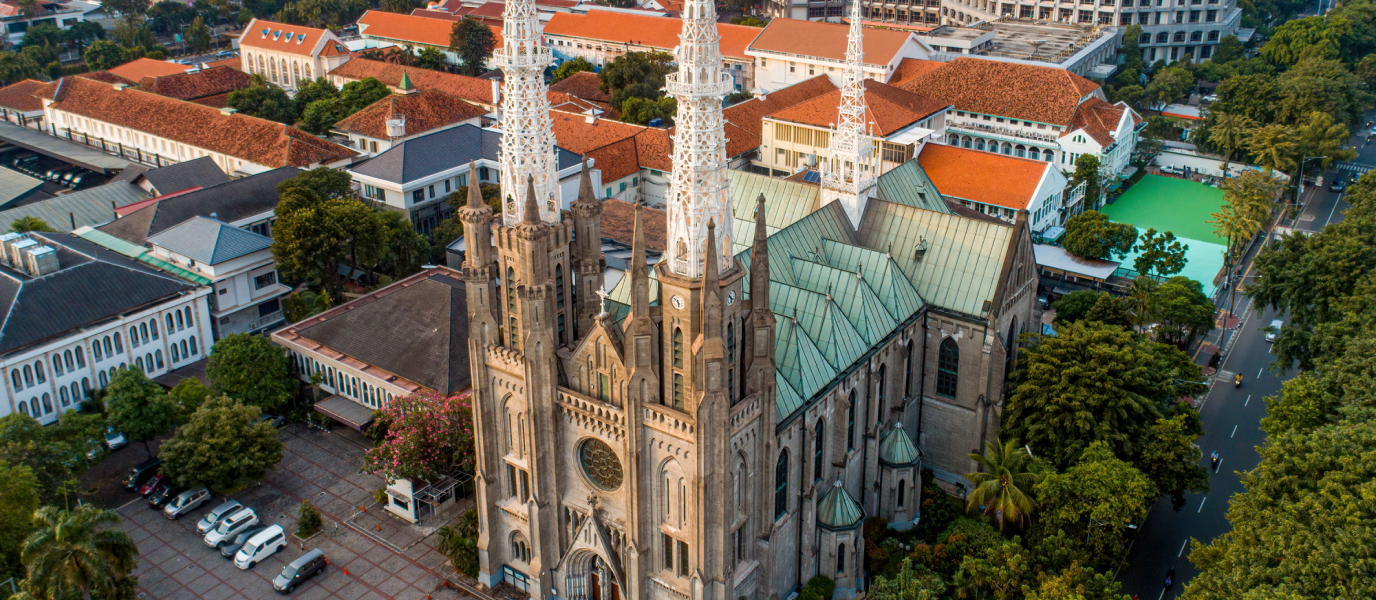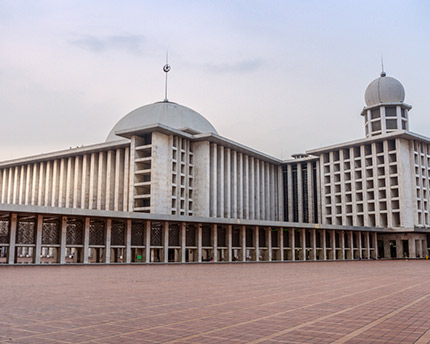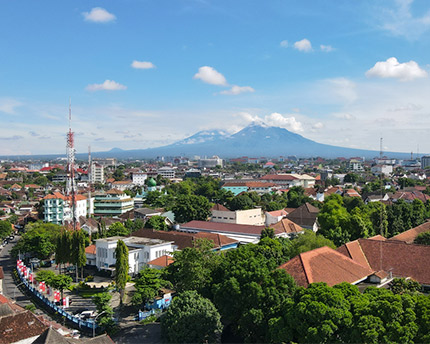An essential place to visit on any trip to Indonesia is Prambanan, the largest Hindu temple in the country and one of the largest in the world. An iconic World Heritage Site, it represents the magnificence of the Hindu religion of Java’s past.
One of the advantages of planning a visit to Prambanan as part of your trip is its proximity to the Buddhist temple of Borobudur, which allows you to visit both religious complexes in a couple of days. Visiting Prambanan and Borobudur is without a doubt one of the most unforgettable experiences on a trip to Indonesia that you cannot miss out on. Their size, their beauty, their symbolism and the importance of both sites for their respective religions make them two of the most unique places in the world.
In this article we discover Prambanan, a true symbol of the Hindu past of Indonesia, the country with the largest Muslim population on the planet.
The largest Hindu temple in Indonesia
Prambanan is the second largest Hindu temple in Southeast Asia, behind only Angkor Wat in Cambodia. Its central building stands 47 metres tall and is surrounded by 240 individual temples forming a large concentric mandala. The compound consists of an inner area made up of 16 temples and 224 smaller Pervara temples between the inner part and outer walls.
Dedicated to Shiva, the main shrine is the tallest and largest building in the complex. Said temple is surrounded by galleries with bas-reliefs telling the story of Ramayana (one of the main Hindu legends), which visitors must walk through while performing pradakshina, i.e. circumambulating, or encircling, the building in a clockwise direction.
The Shiva temple consists of five chambers. The main chamber houses the three-metre-tall statue of Shiva Mahadeva.
Around the main temple are a series of smaller temples, including Brahma, Vishnu, Vahana and Apit, forming the inner part of the complex and the first line of the walls. The mandala is completed by a second perimeter containing the 224 Pervara temples, small shrines of which most are in ruins.
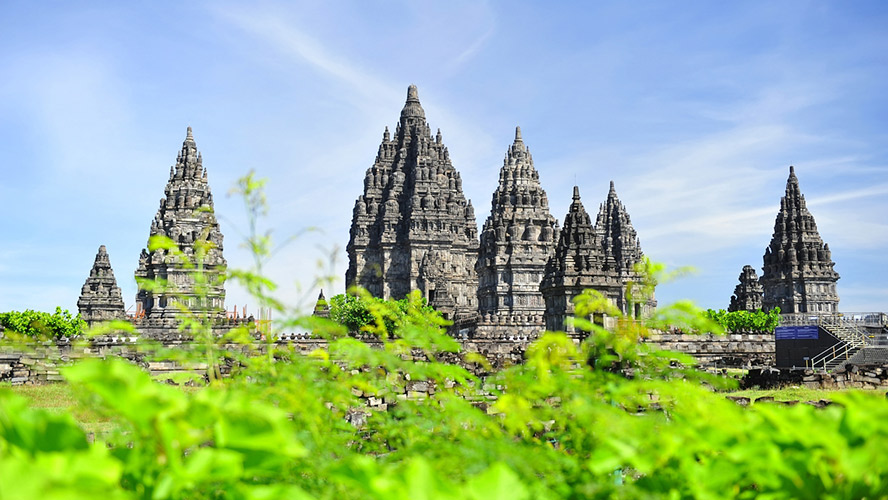
History and unusual facts
The history of Prambanan dates back to the ninth century, during the reign of Rakai Pikatan, and was built to honour Shiva, god of Hinduism, and match the large Buddhist temple of Borobudur, built just a short distance away. A Shivagrha inscription dated 12 November 856 indicates the temple was opened on said date.
Prambanan is called the Shrine of a Thousand Temples, since it is believed to have consisted of this number in the past. Legend has it that a love-sick prince asked Princess Loro Jonggrang to marry him. The princess did not want to get married, however, so she set the prince the impossible challenge of building her one thousand temples in one night. The prince had managed to build 999 temples when she tricked him into believing that the sun was already rising by starting a fire at night. Furious, the prince turned Loro into a stone statue, which would become today’s sculpture of Durga, which can be seen in the Shiva temple.
Whether it’s a legend or not, the supposed 1,000th temple is Candi Sewu, the most important one, situated close to Prambanan. Together they all formed four concentric rows of smaller temples around the main tower.
However, the eruption of the Merapi volcano or a possible conflict led to the abandonment of the temple by the monks. It was later discovered in 1811 by the British explorer Colin Mackenzie, although it was not until the first few decades of the twentieth century when the temples’ reconstruction and conservation began.
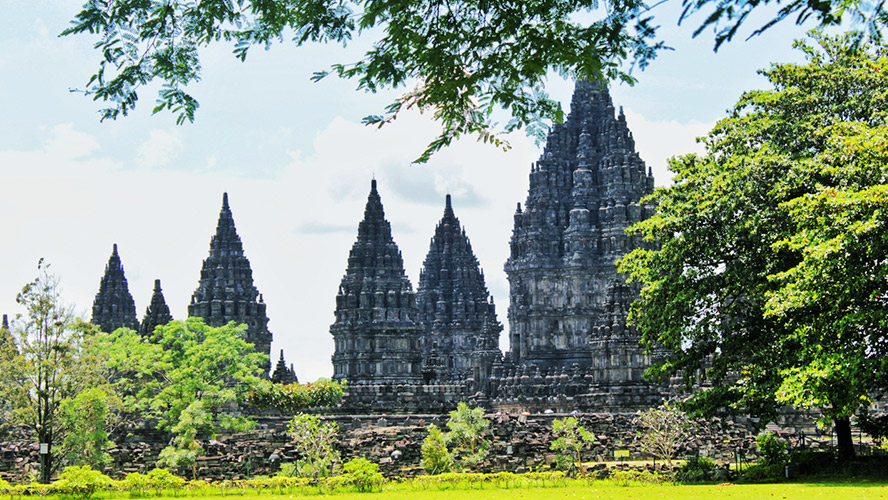
Small temples close to Prambanan
In addition to the Prambanan compound, there are a number of other Buddhist and Hindu temples in the immediate vicinity completing the archaeological site. To visit them you can go on a group tour or hire transport such as a horse-drawn cart, taxi or car.
In total there are around a dozen smaller temples of both Buddhist and Hindu origin. All of them contain a large number of sculptures and bas-relief discovered in different excavations. The oldest of these is Candi Kalasan.
Visiting information
The Prambanan compound is open to visitors from 6 a.m. to 6 p.m. daily. It is advisable to visit wearing comfortable clothes and footwear as it can get very hot in summer and there are a lot of steps throughout the site and tours are quite long.
English-speaking guides are also available for tours.
We recommend visiting soon after opening as there are less people and you can make the most of the morning light, which makes for great photographs.
To get to Prambanan you can take a bus from the centre of Yogyakarta (30 minutes), or a train, getting off at the nearby station of Brambanan (9 minutes from the temple). The train ride from Yogyakarta takes 30 minutes.
What to see in the surroundings
In the area around Prambanan, in addition to the other small temples, you can visit the Buddhist complex of Borobudur, which it rivalled at the time of its construction.
Also close is the city of Yogyakarta, just 20 kilometres away, considered the cultural capital of Indonesia and an interesting city to explore over a couple of days.
Where to stay on a trip to the island
In the area around Prambanan there are several small hotels where you can stay, especially the night before your visit if you plan on going early in the morning. Most people, however, stay in Yogyakarta.
If you are thinking about visiting other parts of Java, Barceló has an establishment in the capital, Jakarta, on the western side of the island. The modern The Orient Jakarta is a recently-opened five-star hotel in a skyscraper in the Sudirman district.




























































